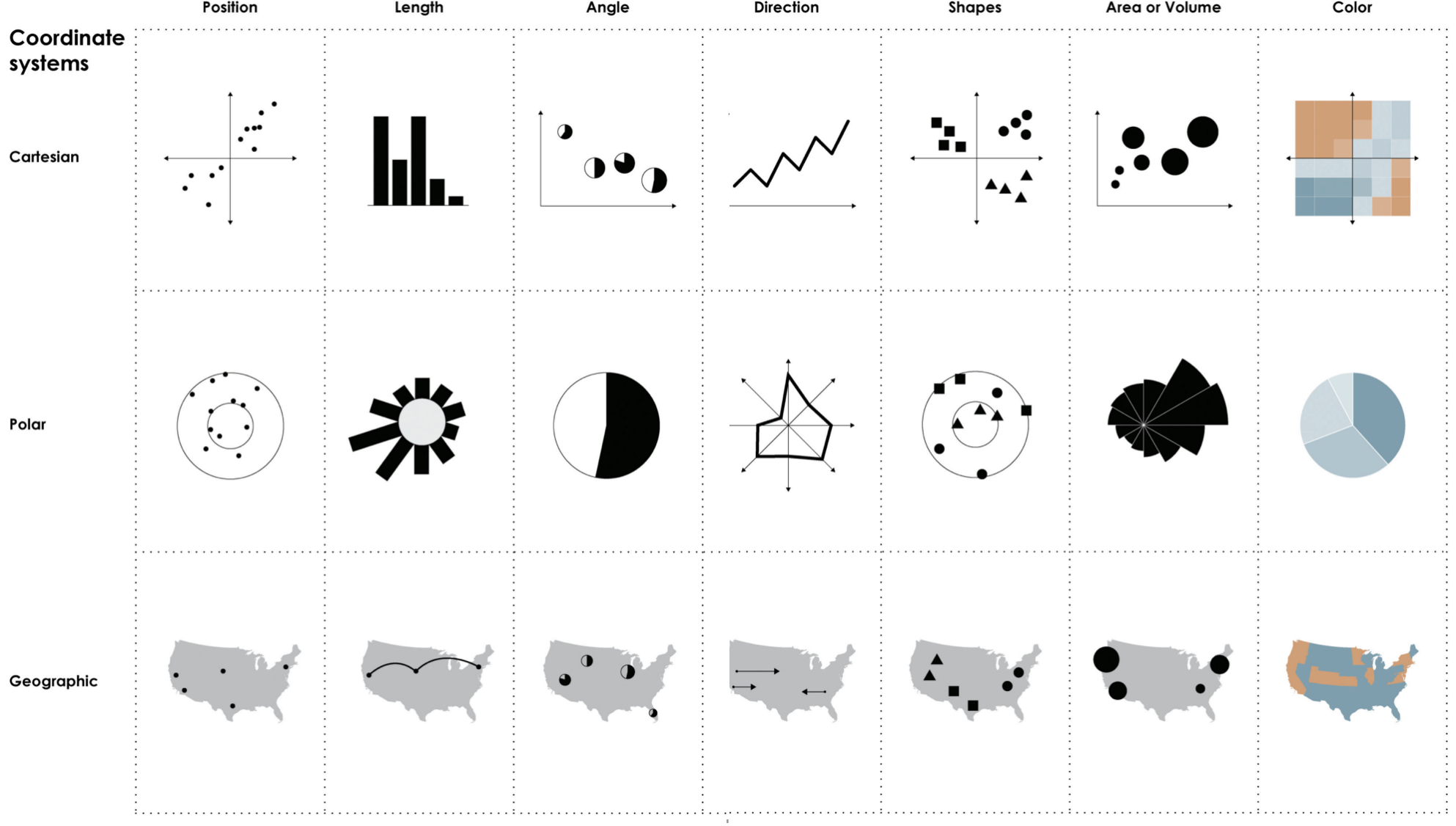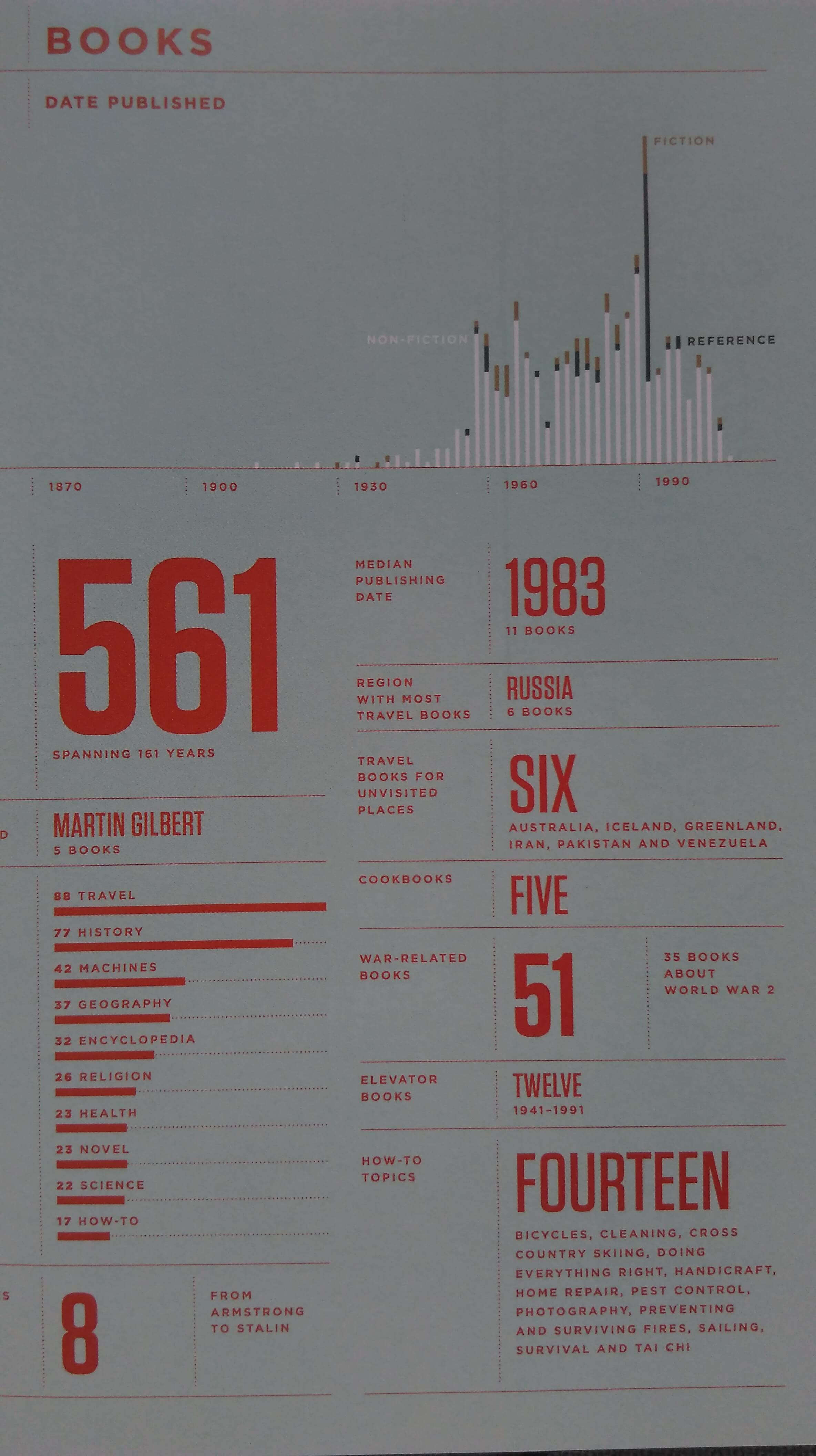For my book review I chose Nathan Yau’s 2013 ‘Data Points: Visualization that means something’. The cover design drew me in immediately and flicking through the pages I came across several really interesting visualisations that I wanted to know more about.
In this book Yau aimed to concentrate on the process of visualisation more than the technique. It is structured into seven sections:
- Understanding Data
- Visualisation: The Medium
- Representing Data
- Exploring Data Visually
- Visualising with Clarity
- Designing for an Audience
- Where to Go from Here
The first two chapters provide a wide introduction to data visualisation and the different forms this can take. Exploring some fascinating examples of data visualisation done differently as well as the endless possibilities of data that can be visualised.
It is only in part 3 that the technical aspects of visualisation are explained. Here different chart types are covered and taken apart in detail, explaining which are most easily processed by the human brain and understood by a general audience. This chapter is more rule oriented, setting clear guidelines, such that pie charts are typically harder to understand than bar charts and that their parts should add up to 100%.

In the next chapter, Yau presents visualisations as a tool for analysis. Being able to see your data can lead to powerful insights, even if these visualisations are not made to be presented to a wider audience. He describes the steps that someone could take in order to use a visual analysis process. This chapter has a lot of overlap with the previous one as it again describes different charts. In this case though, it starts from the data to be analysed and goes from here to explore the different visualisation options best suited to the purpose. For instance, the section on temporal data discusses the different approaches that can be taken to visualise this information.
In the following chapter on clarity, more visualisation best practices are covered, exploring visual hierarchy, readability, highlighting, annotation, and statistical transformations. Yau emphasises the importance of displaying data accurately, and providing enough information, for instance through informative titles or highlighting of the most important values, in order to ease presentation.
The next section is closely related to clarity, in that it explores how a typical audience may misunderstand a visualisation and what can be done to reduce the likelihood of this happening. It also covers the balance between clarity and aesthetics, reiterating that the quality of a visualisation depends on the context it is used in and that there are cases in which clarity may be sacrificed in order to make a visualisation more attractive.
Wrapping up, the final chapter presents some popular tools that can be used to visualise data.
 Yau has an engaging, often colloquial writing style that is neither complicated nor patronising. Each chapter ends with a short summary of the previous pages, which provides a useful summary of the most important points. The technical instructions and visualisation guidelines are well-presented and useful but don’t differ from guides in other books or online.
Yau has an engaging, often colloquial writing style that is neither complicated nor patronising. Each chapter ends with a short summary of the previous pages, which provides a useful summary of the most important points. The technical instructions and visualisation guidelines are well-presented and useful but don’t differ from guides in other books or online.
Two things stood out to me about this book that I really likes. The first are the great visualisations, of which there are many. These aren’t exclusively designed in Tableau and give a broad overview of what is possible. This visual aspect was lacking for me in some other books, such as ‘Storytelling with data’ by Cole Nussbaumer Knaflic, in which all graphs are created in Excel as the focus of the book is much more technical. My interest in data visualisation stems from a combination of a passion for science and data as much as a love for art, and the aesthetic quality of data representation is a very important aspect to me. Yau’s selection of artwork provided inspiration for future projects and I have flagged several pages that I will attempt to recreate in Tableau. Yau also covers some more abstract ideas of data visualisation beyond simply explaining different chart types; for instance in exploring photographs as a visual representation of information. This invites the reader to reassess preconceived ideas and look at the world differently, looking for other ways in which data is communicated in everyday life.
The second aspect I really liked is the structure of the contents. Yau doesn’t start with the basics and then builds up, but immediately pulls in the reader with fascinating examples of great visualisations and exceptional cases. It creates an interest and motivation to read on, in the hope of achieving these results yourself by reading the rest of the book. I personally found myself captured from the start.
